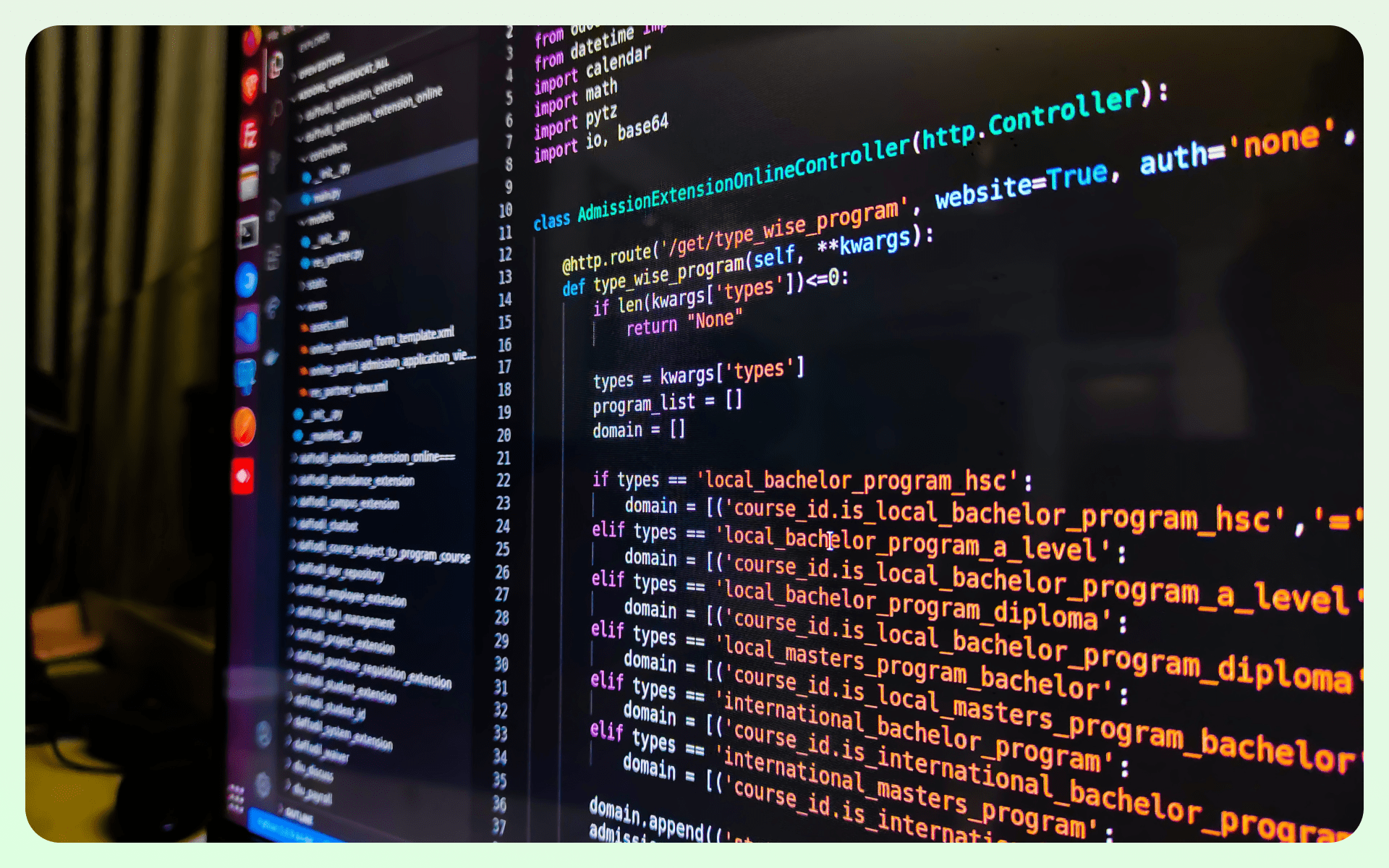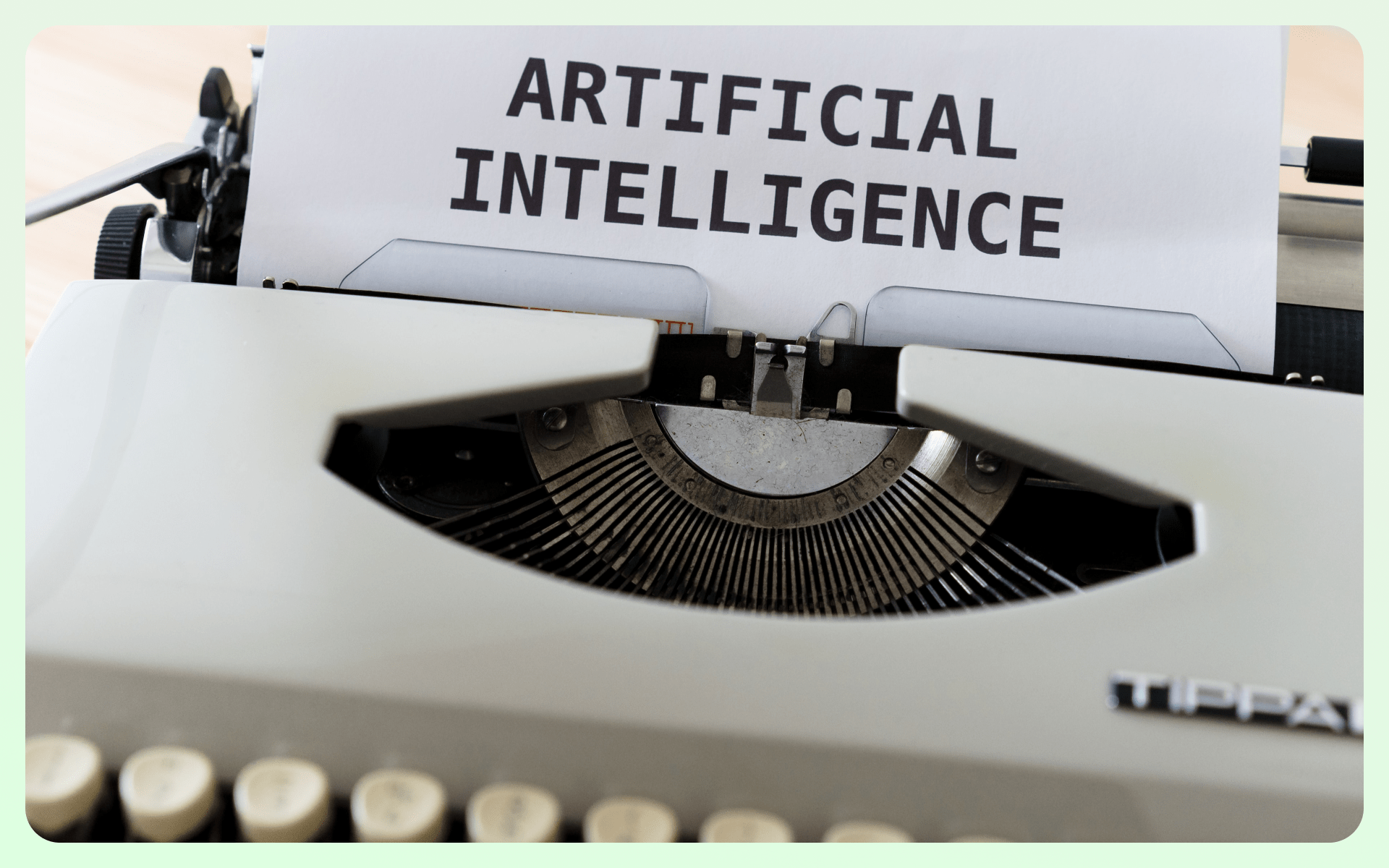Artificial Intelligence Jobs Opportunities: Professional AI Skills In Demand 2023
AI is revolutionizing the employment market across industries, generating new roles and altering the character of current ones.
This article delves into the most in-demand AI talents, the sorts of AI employment accessible, and the industries that AI will influence.
The article examines the significance of mathematics and statistics, programming languages such as Python and R, cloud computing, and AI and machine learning expertise.
The article also delves into the various types of AI jobs, such as machine and deep learning, engineering, data science, business intelligence development, research scientist, big data engineering/architect, software development, software architect, data analysis, robotics engineering, NLP engineer, and the jobs that AI will impact, such as customer service representatives, receptionists, bookkeepers/accountants, retail services, and translators and proofreaders.
As AI evolves, so will the labor market, and staying ahead of the curve is critical.
Professional AI Skills in Demand
1. R or Python programming language
Python is the most often utilized programming language in DS/AI and ML disciplines. It is a simple, open-source programming language with a large user base and extensive, frequently updated documentation.
Python may program, script, display, scientifically compute, and web scrape. Python’s data structures, modularity, and Object Orientation make it ideal for data-driven application development.
Data scientists use Python for various tasks, such as constructing financial models, web scraping data, producing simulations, web development, data visualization, and more.
In Python, there is a well-tested library for practically any problem.
R is another popular programming language in the data science field.
R is better suited for data visualization and decision-making using graphical data. It is simple to learn and properly documented.
R is a popular data science programming language in numerous areas, including healthcare, e-commerce, and finance.

2. Cloud Computing
Almost all major sectors are shifting away from on-premises servers to some cloud service. Furthermore, the applications are built as a collection of self-contained microservices that are delivered and operate on the cloud.
Cloud computing enables enterprises to grow their IT architecture in response to demand, saving operational and capital costs.
All main DS applications must be built and operated effectively in the cloud. Microsoft (Azure), Amazon (AWS), Google (GCP), and IBM (IBM Cloud) all have commercial DS services that operate on cloud solutions.

3. Mathematics and Statistics
Data Science, AI, and ML are built on statistics, probability, and mathematics. Without a solid basis in these three areas, it is impossible to construct viable ML algorithms.
Unstructured data sets make it nearly hard to extract significant insights. Statistics is required to filter and analyze data.
After executing numerous statistical tests on the results of each model, data scientists often select one model from a group of models.
Furthermore, understanding and problem-solving the underlying equations of many existing models, such as NaiveBayes or Support Vector Machine (SVM), requires knowledge of probability and mathematics.

4. Artificial Intelligence (AI)
Typically, artificial intelligence is used to automate data analytics processes and forecast more correctly. Data scientists may use AI to obtain real-time actionable insights well supported by data.
AI aims to imbue robots with human-like characteristics, allowing them to think, analyze, and respond faster than human workers in a complex political dynamic market setting.
Many manual professions have already been rendered obsolete by the use of AI. AI is widely used in image processing, natural language processing, computer vision, and other domains.

5. Machine Learning
Organizations employ machine learning algorithms to forecast something or to classify and categorize.
Firms want ML professionals who can create powerful data analytics algorithms that make accurate predictions with the least mistake.
ML assists data scientists in extracting relevant insights from varied data sets.

What AI Careers Can You Pursue?
1. Machine Learning Engineer
Machine learning engineers work at the crossroads of software development, artificial intelligence jobs, machine learning engineering and data research.
They use big data technologies and programming frameworks to build production-ready scalable data science models capable of handling terabytes of real-time data.
Machine learning engineer positions are ideally suited to those with a background in data science, applied research, and software engineering.
Strong mathematics abilities, experience in machine learning, deep learning, neural networks, and cloud applications, and programming skills in Java, Python, and Scala are required for AI positions.
It also helps to be familiar with software development IDE tools such as Eclipse and IntelliJ.
2. Data Scientist
Data scientists gather, analyze, and derive insights for various objectives. They extract information from data and uncover significant patterns using different technological tools, procedures, and algorithms.
This can range from as simple as spotting abnormalities in time-series data to as complicated as forecasting future occurrences and offering suggestions.
3. Business Intelligence Developer
Developers of business intelligence (BI) analyze complicated internal and external data to find meaningful patterns. For example, in a financial services firm, this may be someone who monitors stock market data to aid in investing decisions.
This might be someone analyzing sales patterns to inform distribution strategy in a product firm.
Business intelligence developers, unlike data analysts, do not construct the social intelligence reports themselves.
They are often in charge of building, modeling, and managing complicated data in highly accessible cloud-based data platforms for usage by business users via dashboards.
4. Research Scientist
One of the most academically motivated AI occupations is either a data scientist or a research data scientist. They pose novel and imaginative queries for AI to solve.
They specialize in various artificial intelligence areas of computer science, including mathematics, machine learning, deep learning, and statistics. Researchers, like data scientists, are expected to hold a doctorate in computer science.
Hiring managers require research scientists to be well-versed in computer perception, graphical modeling, reinforcement learning, and natural language processing.
Benchmarking, parallel computing, distributed computing, machine learning, and artificial intelligence knowledge are advantageous.
5. Big Data Engineer/Architect
Big data engineers and architects create ecosystems allowing diverse business sectors, industries, and technology to connect efficiently.
This profession might feel more extensive than data scientists since big data engineers and architects are often entrusted with ai roles in planning, creating, and implementing big data environments on Hadoop and Spark platforms.
Most employers prefer job candidates with a Ph.D. in mathematics, computer science, or a related discipline.
However, because this is a more practical job than, for example, a research scientist, a master’s or bachelor’s degree or advanced degree and hands-on experience is sometimes considered a viable alternative to a lack of academic degrees.
Big data engineers are required to be proficient in C++, Java, Python, or Scala programming. They should also know about data mining, visualization, and transfer.
6. Software Developer
AI software developers create software for AI applications. AI jobs combine development duties such as creating code, continuous integration, quality control, API administration, etc.
They create and manage the software used by data scientists and architects. They keep the research scientists up to current on emerging artificial intelligence technology.
An AI software engineer should be knowledgeable in software engineering and artificial intelligence.
They must have programming capabilities as well as statistical/analytical abilities. Employers often require a bachelor’s degree or master’s degree either in computer science, engineering, physics, mathematics, or statistics.
AI or data science certifications might also help you gain a career as an AI or software engineer or developer.
7. Software Architect
Software Architects create and manage systems, tools, platforms, and technical standards. AI software architects do this for artificial intelligence technologies.
They design and manage ai technology and AI architecture, plan and implement solutions, choose the most ai tools, and guarantee that data flows smoothly.
AI-driven organizations require a full bachelor’s or master’s degree in computer science, information systems, or software engineering for their software architects.
In a practical function, experience is just as critical thinking vital for ai professionals as education. Hands-on expertise with cloud platforms, data operations, software development, statistical analysis, and so on will benefit AI professionals.
8. Data Analyst
How many jobs did a data analyst gather, clean, process, and analyze data for a long time to get insights? These job opportunities were mostly dull, repetitive jobs in the industry in the past.
Much of the routine job has been mechanized due to the emergence of job growth of AI. As a result, the data analyst position has been elevated to entry-level to join the new set of AI occupations.
Data analysts nowadays prepare data for machine learning models and provide useful reports based on the outcomes.
9. Robotics Engineer
When industrial robots initially gained prominence in the 1950s, robotics engineering was one of the first AI vocations.
Robotics has progressed from manufacturing lines to teaching English. Robot-assisted procedures are used in healthcare. Humanoid robots are being developed to make humans do new jobs and serve as personal helpers.
All of these and ai jobs are the responsibility of a robotics engineer.
Engineers in robotics design and maintain AI-powered robots. Organizations often anticipate the future by hiring ai professionals with graduate degrees in engineering, computer science, or a related field for such positions.
In addition to machine learning and AI skills, robotics engineers may be an advanced degree required to comprehend CAD/CAM, 2D/3D vision systems, the Internet of Things (IoT), and other technologies.
10. NLP Engineer
Natural Language Processing (NLP) engineers are artificial intelligence (AI) specialists specializing in human language, encompassing spoken and written information.
NLP technology is used by engineers who work on voice virtual assistants, speech recognition, document processing, etc.
Organizations require an NLP engineer to have a master’s or specialist degree in computational linguistics. They may also be open to candidates with computer science, mathematics, or statistics degrees.
An NLP engineer would need expertise in semantic extraction techniques, data structures, modeling, n-grams, a bag of words, sentiment analysis, and so on, in addition to general statistical analysis and computer skills.
Experience with Python, ElasticSearch, web development, and other programming languages may be advantageous.
Industries That Will Always Need Humans
Managing and developing people (9 percent automation potential) and applying knowledge to decision-making, planning, or creative work (18 percent) are the most difficult activities to automate with currently available technology.
These activities, sometimes called knowledge labor, include developing software products, devising menus, and producing promotional materials.
For now, computers thrive at well-defined tasks such as optimizing transportation routes and good examples. However, people must still identify appropriate goals, assess findings, and give common sense checks for solutions.
The value of human connection is clear in two fields with relatively modest technological potential for automation: healthcare and education.
Overall, healthcare has a technological potential for automation of roughly 36%, but the potential is smaller for health professionals whose everyday duties need competence and close contact with patients.
Based solely on technological concerns, we estimate that fewer than 30% of registered nurses’ tasks may be automated. This number falls to 13% for dental hygienists.
Nonetheless, some healthcare operations, such as hospital meal preparation and non-intravenous medicine administration, may be automated if existing demonstrated technology were applied.
Data collecting, which consumes substantial business working time, might become more automated. Nursing aides, for example, spend almost two-thirds of their time gathering health data.
Even more difficult tasks doctors perform, such as providing anesthetic during basic operations or analyzing radiological images, have the technological capacity to be automated.
Education has the lowest technological feasibility of all the investigated areas, at least for now. To be sure, digital technology is revolutionizing the sector, as seen by the plethora of online programs and learning vehicles.
However, the core focus of teaching is profound knowledge and intricate connections with others. Those two categories—the least automatable of the seven outlined in the first exhibit—account for almost half of all educational activities.
Nonetheless, 27 percent of educational activities—primarily those that occur outside of the classroom or on the sidelines—have the potential to be automated using proven technology.
Janitors and cleaners, for example, clean and monitor the premises of a building. School food is prepared and served by cooks.
Administrative assistants keep track of inventories and employee information. Automating these various data entry-collection and processing tasks may aid in reducing the increase of education’s administrative expenditures and lowering its cost without compromising its quality.

Types of Jobs AI Will Impact
The modernization of agriculture and industry in the United States is one of the most dramatic historical examples of technology-driven employment losses. At the end of the nineteenth century, this primary industry sector employed almost half of all American employees.
Their current prevalence ranges between 1 and 2%. Tractors and other agricultural technology have irreparably destroyed millions of jobs. This change led to significant short- and medium-term unemployment as jobless farmers relocated to cities for manufacturing work. Today, service industry sectors employ approximately 80% of the American workforce.
The crucial question is whether the labor market upheaval caused by artificial intelligence will have a similar outcome. AI, like electricity, is a general-purpose systemic technology that will someday cross over and permeate every element of our economy and society.
Because of its simplicity and comfort, people are ready to implement artificial intelligence into new jobs and various facets of everyday life. However, the transition will be slow, and it may take several years before artificial intelligence entirely replaces the human touch in your work.
1. Customer Service Representatives
Customers’ questions and issues are frequently recurrent. Answering these questions does not require high emotional intelligence or social intelligence. As a result, artificial intelligence (AI) may be utilized to generate automatic solutions to commonly requested queries answering questions.
These inquiries include delivery status, payment confirmation, purchase cancellation, or refund status. If the bot cannot handle the inquiries, they will be sent to a human customer support agent.
2. Receptionists
Many major firms tech companies are currently deploying receptionist robots. AI now manages even phone calls. You may have encountered it while booking a table at a restaurant, where you may utilize the online scheduling system rather than speaking with a live operator. AimeReception, for example, can see, listen, comprehend, and converse with guests and clients.
3. Bookkeepers/Accountants
Many businesses are increasingly utilizing AI in their bookkeeping operations. AI-powered bookkeeping services, which are cloud-based, provide an efficient accounting system and flexibility and security. All you have to do is enter your daily transactions into the program, and it will do the rest.
AI will guarantee that data is appropriately captured, kept, and evaluated. Using an AI accounting solution is far less expensive than paying someone for the same task.
Automation Anywhere, Datamatics, and Blue Prism are examples of software that can automate numerous office tasks. An Excel file may be trained to extract and “study” data.
And then there’s data analytics. Rather than depending on an audit, products such as PricewaterhouseCoopers Halo can analyze all of a company’s data to look for irregularities. Humans will continue to be involved in robot training and higher levels of analysis, but rote tasks such as data entering, copying and pasting, sorting and reordering will be abolished.
4. Retail Services
Shopkeepers’ primary tasks at a retail establishment are inventory management, money collection, and answering queries to increase sales. As retailers steadily burden customers, as any supermarket shopper knows, employees are already sliding away from the checkout process.
The Amazon Go shop in Seattle is an extreme example of where we’re going. Machines will also move, handle products, and respond to inquiries. Tally from Simbe Robotics handles the time-consuming and repetitive operation of auditing out-of-stock products, underselling things, lost items, and price problems. It is compatible with existing store layouts and may move alongside people during shopping hours.
Human connection is and will continue to be the most difficult component of the retail job for robots, but even here, firms are making progress. SoftBank Robotics has sold hundreds of Pepper robots in Japan, undoubtedly the greatest humanoid robot development hub.
5. Translators and proofreaders
Several AI-powered programs are available for authors to self-edit their work. Because AI technologies support natural language processing, authors may examine their work for readability concerns, spelling faults, and grammatical flaws.
Grammarly is an excellent example of such a tool. AI techniques such as DeepL and Google Translate allow you to translate your work into hundreds of languages.
Conclusion
Finally, AI is transforming the labor market in unprecedented ways, offering new possibilities for jobs while altering the character of current ones. As AI advances, it will become increasingly significant in practically every area of our lives, from how we work to how we live. AI will have a wide range of effects on sectors, and the employment that will be generated will be diversified and fascinating. Individuals may take advantage of AI’s new opportunities and develop exciting and successful professions by obtaining the essential AI skills and staying ahead of the curve.

